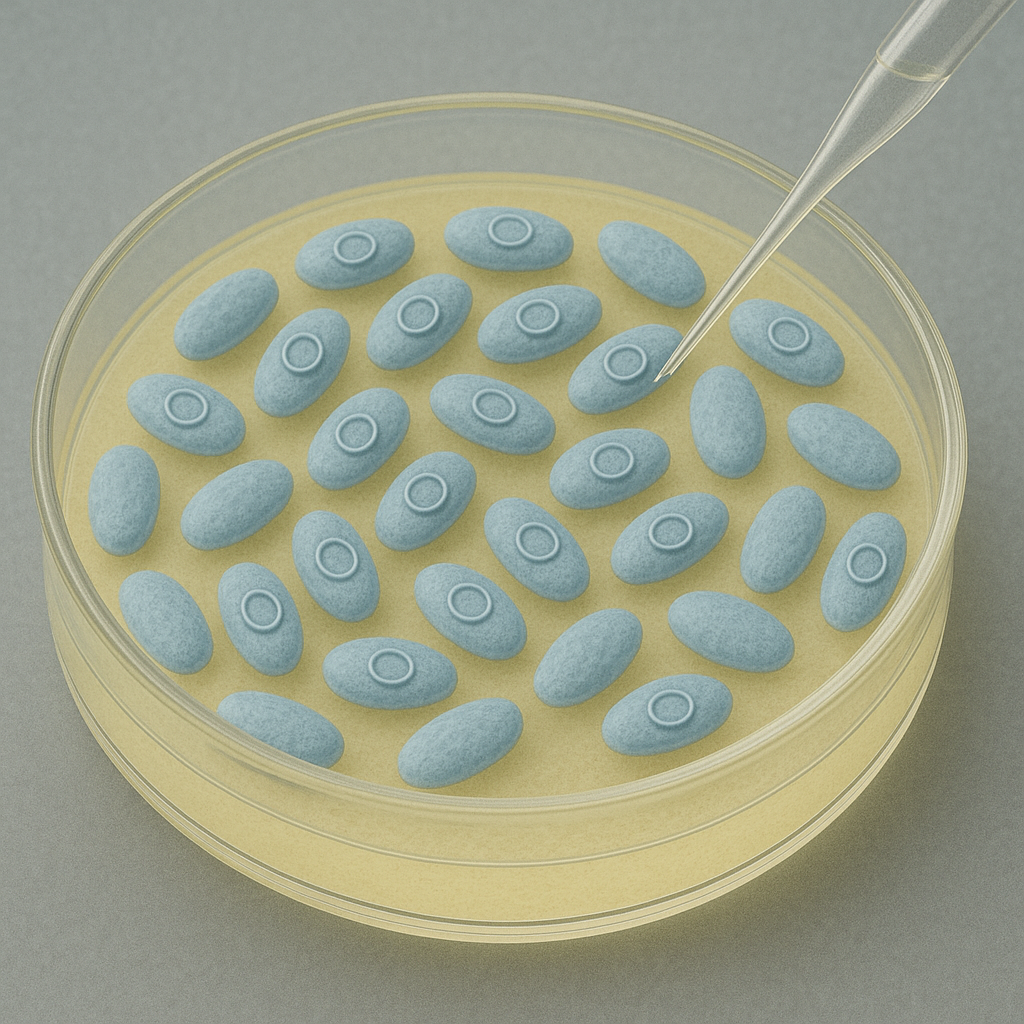
Choosing the right selectable marker
|
|
Time to read 5 min
|
|
Time to read 5 min
Plasmids need selectable markers to isolate successful transformants.
Marker type affects plasmid size, host burden, and regulatory risks.
Antibiotic resistance genes are common but not always ideal.
Auxotrophic and toxin-antitoxin systems offer antibiotic-free options.
The right marker depends on your system, goals, and workflow
Plasmid success starts with smart design—and the selection marker is a critical part of that. This small but crucial feature ensures only cells that have taken up your plasmid survive, enabling confident downstream analysis. Whether you're working in bacteria, yeast, or mammalian systems, choosing the right marker can determine experimental success or failure.
In this article, we explore what selection markers are, the options available, and why the right choice can make or break your experiment.
Need help designing a plasmid with the right selectable marker?
Sign up for our plasmid design service and let our experts guide you. We specialize in optimizing plasmid architecture to match your application—whether it's for research, therapeutic development, or industrial production.
Before selection can occur, the plasmid first needs to be delivered into the cells. In bacteria and yeast, this is typically done through transformation, where cells take up plasmid DNA from their environment. In mammalian systems, the process is called transfection, which uses chemical, electrical, or viral methods to introduce the DNA.
Regardless of the method, not all cells will successfully receive the plasmid, so you need a fast, reliable way to identify and select the ones that did. That’s where selection markers come in.
A selectable marker is a gene included in a plasmid that allows scientists to distinguish between cells that successfully received the plasmid (and the gene of interest) and those that did not.
The most common type of selection marker is an antibiotic resistance gene. These genes allow only plasmid-positive cells to grow in the presence of a specific antibiotic, killing off untransformed cells.
Important: Marker choice is not one-size-fits-all. Your experiment’s host, conditions, and goals all affect which marker you should use.
Different systems require different antibiotics. Below is a quick reference:
Antibiotic |
Host Type |
Mechanism |
Pros & Use Tips |
Limitations |
Ampicillin |
Bacteria (Gram -) |
Inhibits cell wall synthesis |
Cheap, common |
Easily degraded by beta-lactamase |
Kanamycin |
Bacteria (Gram +/-) |
Inhibits protein synthesis |
More stable than Amp |
Higher metabolic burden |
Chloramphenicol |
Bacteria |
Inhibits protein synthesis |
Small size, effective in many strains |
Toxic to humans |
Hygromycin |
Mammalian, yeast |
Inhibits protein synthesis |
Works in eukaryotes |
Toxic; expensive |
Puromycin |
Mammalian |
Inhibits translation |
Rapid kill in mammalian cells |
Requires careful dosing |
Zeocin |
Broad |
Induces DNA cleavage |
Works in bacteria & eukaryotes |
Sensitive to light |
Even common antibiotic markers require experimental fine-tuning:
Best practice: Always empirically validate antibiotic workflows for your specific cell lines.
Choosing the right antibiotic is just the beginning. Let’s explore alternatives that don't rely on antibiotics at all.
There are valid reasons to avoid antibiotics, such as:
Workflows that need fast results without requiring long-term selection might use fluorescent proteins like GFP or RFP as visual selection markers in rapid screening by flow cytometry or microscopy. However, because this doesn’t eliminate non-transfected cells, additional steps are needed to separate positives from negatives, and it’s ineffective for establishing stable cell lines.
In auxotrophic systems, a host strain lacks a gene for essential nutrient synthesis. By restoring that gene on a plasmid, only plasmid-containing cells can grow. These systems are often used in yeast but can also apply to specially engineered bacterial strains.
However, they offer weaker selection pressure than antibiotics, and there are fewer unique auxotrophic markers compared to antibiotics, which can limit multi-plasmid experiments.
Nutrient |
Gene |
Notes |
Tryptophan |
trpA |
Common in E. coli auxotrophs |
Uracil |
URA3 (yeast) |
Works well in yeast systems |
Leucine |
LEU2 (yeast) |
Often used for selection & screening |
Toxin-antitoxin (TA) systems support plasmid maintenance by selectively eliminating cells that lose the plasmid. They encode a stable toxin and an unstable antitoxin; if the plasmid is present, the antitoxin neutralizes the toxin. If the plasmid is lost, the antitoxin degrades and the toxin remains active, leading to cell death. A well-characterized example is the hok/sok system in E. coli, which relies on RNA binding dynamics to prevent toxic protein production.
Pros:
Cons:
Choosing the wrong marker or failing to optimize its use can compromise your experiment. Watch out for these common issues:
Marker Type |
Host |
Live/Dead? |
Pros |
Cons |
|
Antibiotic |
All |
Yes |
Reliable, well-studied |
Resistance concerns |
|
Fluorescent |
All |
No |
Visual tracking |
No selection pressure |
|
Auxotrophic |
Bacteria, yeast |
Yes |
Antibiotic-free |
Strain-dependent |
|
Toxin-antitoxin |
Bacteria |
Yes |
Strong plasmid maintenance |
May reduce growth rate |
|
Your selection marker doesn’t just help you identify plasmid-positive cells; it influences plasmid stability, host burden, and downstream success. From experimental design to regulatory considerations, marker choice matters.
Need help choosing the best marker for your system? Contact us to design ready-to-use plasmids that perform.
Selection of articles and book chapters
Selectable marker parts from iGEM
Selectable markers from Takara
Advanced: Split Selectable Markers
A marker that reliably distinguishes plasmid-positive cells with minimal stress to the host.
Only if the plasmids are not co-transformed. For multi-plasmid experiments, use distinct markers that are compatible with the host.
Generally, yes, in research labs. However, they may be avoided in industrial or clinical settings due to biosafety and regulatory concerns.
Fluorescent markers offer visual confirmation but do not apply selective pressure to eliminate plasmid-negative cells.
Yes. Some markers impose metabolic burden or interfere with expression through regulatory crosstalk, but this is usually manageable.